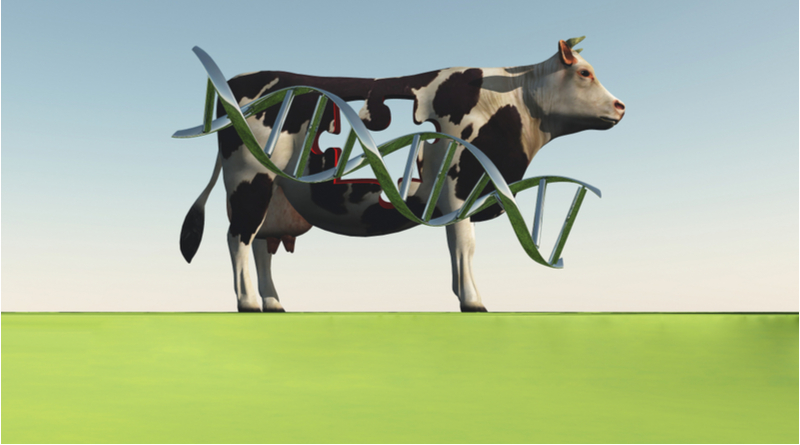What is Animal Biotechnology?
Animal biotechnology is a branch of biotechnology in which molecular biology techniques are used to genetically engineer animals to improve their suitability for agriculture, industrial, or pharmaceutical applications.
Examples of animal biotechnology include creating transgenic animals (animals with one or more genes introduced by human intervention), using gene knockout technology to make animals with a specific inactivated gene, and producing nearly identical animals by somatic cell nuclear transfer (or cloning).
What 3rd level courses are available?
Universities and colleges in Ireland are offering Animal Biotechnology courses in the following subject areas:
- Certificate in Animal Biotechnology – Gain knowledge of the use and potential of biotechnology in agriculture, specifically in the area of animal production.
- Applied Science: Biotechnology – The study of the theoretical and practical skills for employment in the industries of biomedical research, biopharmaceuticals, agrochemicals, and biotechnology.
- MSc in Agricultural Biotechnology – This program has been designed to produce graduates with a deep knowledge, understanding, and experience of the use and potential of biotechnology in agriculture.
- Certificate in Environmental Biotechnology – Gain knowledge of the use and potential of biotechnology in crop production, soil bioremediation, and bioenergy production.
- Pharmaceutical Quality Assurance & Biotechnology – The study of the specific requirements of the pharmaceutical and related industries concerning quality assurance.
Studying Animal Biotechnology in college
Many Animal Biotechnology courses take place over 1 year to 4 years depending on the course and modules selected. There are also part-time courses and night courses available so you can be sure to fit in your studies no matter what your schedule is like.
Courses will cover theory work through lectures, assignments, tutorials, and taught modules. Assessments will take place continuously with written examinations and practical assignments combined to achieve a qualification. You could also consider work experience or a work shadow in the industry. While any lab experience will be a great help to your career prospects, try to gain experience relevant to your field of interest to enhance your application.
Relevant work experience is a good way of demonstrating a genuine interest in the field and is regarded favorably by employers.
Work Experience will not only allow you to obtain a deeper knowledge and understanding of the industry, but it will also give you a chance to do some essential networking with other industry professionals and gain valuable contacts for the future.
Career options
After completing a course in Animal Biotechnology you will be able to get started in a career that uses specific knowledge of biological knowledge and techniques. Biotechnologists use a variety of scientific disciplines to improve processes for a range of different industries including pharmaceuticals, healthcare, biofuels, agriculture, conservation, animal husbandry, and food production.
As an animal biotechnologist, you’ll study the chemical, genetic and physical attributes of cells, tissues, and organisms to develop new technologies, processes, and products that will address some of the biggest problems facing society.
The role involves manipulating living organisms or their components to design or enhance vaccines, medicines, or food productivity and safety. Jobs are available with biotechnology and genetic engineering firms, food and drink manufacturers, environmental and conservation companies, government and charity research institutes, horticulture and agriculture organizations, hospitals, pharmaceutical, and chemical companies, private clinical research companies, universities, and research institutions.
Working hours will depend on whether you are employed by a facility with set business hours or if you are contracted to various facilities or companies. A standard working week is usually between 35 to 40 hours. However, it’s common to work shifts, nights, and weekends when conducting experiments that need continuous monitoring.
Work is often carried out in modern laboratories at hospitals, industrial lab units, factories, or universities. You’ll typically be working in sterile conditions and will need to wear protective clothing, such as a lab coat and safety glasses.
You’ll usually conduct experiments individually but will sometimes work collaboratively to achieve a common goal. Sharing information with your supervisor and colleagues is typical, and you may also need to attend conference calls or international conferences and produce research papers.
Expect to use a range of standard and highly specialized laboratory equipment and computerized machines to produce results, at times to a short deadline.
You may need to travel to enhance your knowledge and understanding of a specific technique or procedure.
Related jobs include:
- Biotechnologist
- Epidemiologist
- Forensic scientist
- Scientific laboratory technician
- Science writer
- Genetic counselor
- Pharmacologist
- Plant breeder/geneticist
- Research scientist
- Academic researcher
- Animal nutritionist
- Animal technician
- Zookeeper
- Zoologist
- Ecologist
- Environmental consultant
- Field trials officer
- Medical sales representative
- Sales executive
- Science writer
Further study
After completing a course in Animal Biotechnology you may choose to pursue further study in a specialist field to increase your knowledge base and skill set. Postgraduate study can also be used as a means to change career focus or to gain professional qualifications required to practice in certain career areas such as biochemistry, biological sciences, biomedical engineering, biotechnology, chemistry or chemical engineering, microbiology, molecular biology, and pharmacology.
FAQ
What are some ways Animal Biotechnology is being used currently?
Animal biotechnology in use today is based on the science of genetic engineering.
· Transgenics – The transferral of a specific gene from one organism to another. Gene splicing is used to introduce one or more genes of an organism into a second organism. A transgenic animal is created once the second organism incorporates the new DNA into its genetic material. Transgenic organisms have also been developed for commercial purposes. Perhaps the most famous examples are food crops like soy and corn that have been genetically modified for pest and herbicide resistance. These crops are widely known as “GMOs” (genetically modified organisms).
· Cloning – Scientists use reproductive cloning techniques to produce multiple copies of mammals that are nearly identical copies of other animals, including transgenic animals, genetically superior animals, and animals that produce high quantities of milk or have some other desirable trait. To date, cattle, sheep, pigs, goats, horses, mules, cats, rats, and mice have been cloned, beginning with the first cloned animal, a sheep named Dolly, in 1996.
Where can I study Animal Biotechnology?
Explore your options here
Did You Know?
· Before the invention of rDNA, insulin was extracted from the pancreas of cows or pigs.
· According to USDA, there are 105 licensed biotech products for animals. These products include veterinary vaccines, biologics, and diagnostic kits. The animal health industry invests more than $400 million a year in research and development.
· Scientists have successfully cloned at least three endangered animals: the European mouflon, the guar, and the banteng, the latter of which is viewable to the public at the San Diego Zoo.
· Scientists in Korea have created biotech cows that may be resistant to mad cow disease, and some research has been done to develop biotech mosquitoes that will no longer infect humans with malaria and other blood-borne diseases.
· Spider dragline silk is incredibly strong and flexible, but impossible to practically mass produce with spiders — they’re simply too territorial. Researchers at the University of Wyoming solved the problem by inserting the silk gene from spiders into more docile creatures: goats. These special dairy animals produce milk containing long, long strands of spider silk, which is then harvested from the milk with a spool in large quantities. The goats are left happy and unharmed.












Comments